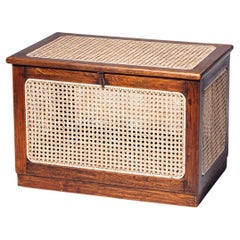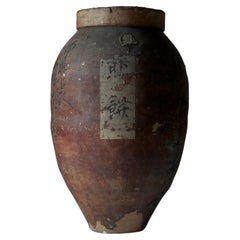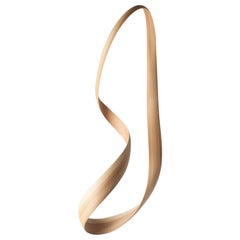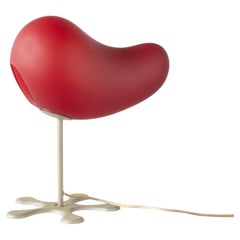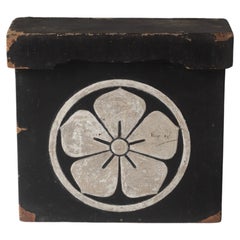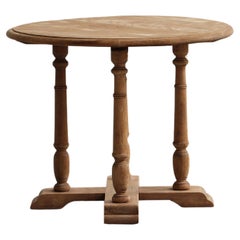Japan - Furniture
to
549
508,630
446,203
1,990
1,325
26
187
137
110
11
8
4
3
3
2
2
1
1
139
382
1,469
1,351
459
520
271
7
8
13
23
26
107
112
84
76
23
1,118
831
784
765
764
2,745
1,929
1,891
707
706
3,341
3,248
3,282
289
58
41
34
33
Item Ships From: Japan
Rattan Laundry Box by Pierre Jeanneret for Chandigarh, India, Circa 1955-56
By Pierre Jeanneret
Located in Tokyo, JP
An authentic mid-century piece from Pierre Jeanneret’s legendary Chandigarh commission. Teak frame with hand-woven bamboo-rattan top & side..
Category
Mid-20th Century Indian Mid-Century Modern Japan - Furniture
Materials
Cane, Teak
Japanese Antique Paper Pasted Pottery / Flower Vase Tsubo / 1868-1912s Wabi-sabi
Located in Iwate-gun Shizukuishi-cho, Iwate Prefecture
This is an old Japanese big pottery.
It was used in an old teahouse in the Tohoku region of Japan.
It was used to transport and store tea leaves.
Since ...
Category
Late 19th Century Japanese Meiji Antique Japan - Furniture
Materials
Pottery, Paper
$1,200 Sale Price
60% Off
Kenta Hirai Japanese Contemporary Bentwood Wall Sculpture
By Studio Jig
Located in Shibuya-ku, Tokyo
Kenta Hirai created it with the technique "Free form lamination." This sculpture mixes free formed wood sculpture and branch. Wood material is Yoshino Cedar.
Category
2010s Japanese Modern Japan - Furniture
Materials
Wood
Foscarini Coco red Aldo Cibic Y2K style design
By Foscarini, Aldo Cibic
Located in Shibuya-ku, Tokyo
Table lamp in red. It was designed in 2000 by Aldo Cibic. Shade is made of glass. Les is made of steel painted.
It's the style in Y2K interior and design. Also really great example ...
Category
1990s Italian Space Age Japan - Furniture
Materials
Steel
Japanese Antique Black Lantern Box /1896s Objet d'art Wabi-sabi
Located in Iwate-gun Shizukuishi-cho, Iwate Prefecture
This is a lantern box from the old days of Japan.
The box is pasted with Japanese paper and painted with black lacquer.
There is a description of "Meiji 29" on the back.
The lantern box is a box that stores folded lanterns...
Category
1890s Japanese Meiji Antique Japan - Furniture
Materials
Wood, Cedar, Paper
$320 Sale Price
46% Off
Japanese Antique Round Table, Wabi-sabi, Japandi
Located in Katori-Shi, 12
A round table with a strong presence, featuring four luxurious lathe-turned legs.
The material is cherry wood, which has a gentle color and texture.
The delicate decoration on the l...
Category
Early 20th Century Japanese Taisho Japan - Furniture
Materials
Wood
Japanese Antique Elegant Cafe Table, Wabi-sabi, Japandi
Located in Katori-Shi, 12
A rare round table with four lathe legs.
Usually, this design has only one leg, but this piece has a special structure with three well-balanced lathe legs that surround the central ...
Category
Early 20th Century Japanese Taisho Japan - Furniture
Materials
Wood
Early 20th c. Stunning signed Bamboo Basket by Kosuge Kogetsu
Located in Fukuoka, JP
Elegant Bamboo Basket by Kosuge Kogetsu ( 1932-2016 )
This refined bamboo basket was crafted by Kosuge Kōgetsu, a master bamboo artist who began his career under the tutelage of hi...
Category
Early 20th Century Japanese Showa Japan - Furniture
Materials
Bamboo
%100 Silk & Natural Dye, Ikat Cushion Cover - Uzbekistan Modern Pillow
Located in Tokyo, JP
Silk Ikat cushions with rich design and high quality, carefully made one by one in Uzbekistan in Central Asia.
Both the front and back sides are hand-woven silk cloth (ikat). All ...
Category
2010s Uzbek Kilim Japan - Furniture
Materials
Silk, Natural Fiber, Organic Material
$180 Sale Price
20% Off
Japanese antique appreciation stone/penis-shaped stone/strange stone
Located in Sammu-shi, Chiba
We have a unique Japanese aesthetic sense.
And only we can introduce unique items through our purchasing channels in Japan and the experience we have gained so far, in such a way that no one else can imitate.
This is a stone carved in the image of an old Japanese male genitalia.
There is a possibility that it was a natural stone that had been carved by the running water of a river for a long time, but it is more likely that it was carved artificially.
In Japan, objects in the shape of male and female genitalia have been made for a long time. The materials used are stone and wood.
In the case of stone, some are made from 3,000 yen to 4,000 years ago.
At that time, it was used in ceremonies to pray for the prosperity of descendants.
In the case of this stone, it was probably dedicated to shrines and village shrines in hopes of prosperity of descendants.
This stone is believed to be from before the Edo period.
Because two types of rocks are mixed, the color contrast is beautiful.
I prepared the pedestal.
Also, there are some shallow cracks, but there is no need to worry about breaking the stone.
Wooden penises...
Category
Early 18th Century Japanese Other Antique Japan - Furniture
Materials
Stone
Wooden Low Table, Display stand, Japanese Antique, Primitive, Wabi-Sabi, Mingei
Located in Katori-Shi, 12
This is an antique wooden low table from the Taisho period.
Made from domestic zelkova wood.
The sides have been repaired by patching up any naturally cracked areas, adding to its ...
Category
Early 20th Century Japanese Taisho Japan - Furniture
Materials
Wood
Wooden Low Table, Japanese Antique, Wabi-Sabi, Mingei
Located in Katori-Shi, 12
This low table was loved by craftsmen as a "workbench" during the Meiji period.
The wood grain, which has deepened with age, is reminiscent of the warm lifestyle of that time.
A cu...
Category
Early 20th Century Japanese Meiji Japan - Furniture
Materials
Wood
Japanese Large Contemporary Yellow Black Gilded Raised Silk Folding Screen
Located in Takarazuka, JP
Japanese contemporary two panel folding screen or "byobu" featuring genryoku style handcrafted raised silk kimono in yellow, black and gold on a cream color background. Tagasode is t...
Category
21st Century and Contemporary Japanese Japan - Furniture
Materials
Silk, Brocade
Floating Back Chair by Pierre Jeanneret for Chandigarh, India, Circa 1955-56
By Pierre Jeanneret
Located in Tokyo, JP
An authentic mid-century piece from Pierre Jeanneret’s legendary Chandigarh commission. Teak frame with hand-woven bamboo-rattan seat & back.
Category
Mid-20th Century Indian Mid-Century Modern Japan - Furniture
Materials
Cane, Teak
Japanese Antique Wooden Vase Object Primitive Wabi-Sabi Japandi
Located in Chiba, Chiba
This is an old Japanese wooden vase.
The flowing grain and scars from the knots look very cool.
It has a hollow center and comes with a copper cup inside, making it perfect for displ...
Category
Mid-20th Century Japanese Japan - Furniture
Materials
Wood
Ryosuke Harashima Contemporary Zen cloth stand
By Ryosuke Harashima
Located in Shibuya-ku, Tokyo
Name: A new polite
Cloth stand designed by Ryosuke Harashima.Made of black steel pipes and light green glass.
STATEMENT:
The morphing of Emon-Kake (Kimon...
Category
2010s Japanese Modern Japan - Furniture
Materials
Steel
Very old Iranian blue-glazed pottery bowl/12th century/Persia pottery
Located in Sammu-shi, Chiba
This pottery was made around the 12th century, likely in the region around Iran.
In Japan, this type of pottery is commonly known as "Persian pottery."
In addition to polychrome-pain...
Category
15th Century and Earlier Persian Other Antique Japan - Furniture
Materials
Pottery
19th Japanese antique Cha Tsubo, paper covered pottery vase wabi sabi pot w/ lid
Located in 常陸大宮市, JP
From Tohoku area, Japan.
This Cha Tsubo, pottery Jar for tea leaf stoage - is a product of late Edo to Meiji era (estimate 1860s-1910) estimate from the style & condition.
The surf...
Category
Late 19th Century Antique Japan - Furniture
Materials
Ceramic, Porcelain, Paper
“Theodore Scherf” France, circa 1900
By Théodore Scherf
Located in Sammu-shi, Chiba
Theodore Scherf France circa 1900 stamped with makers mark
Industrial shelf manufactured by Theodore Scherf.
Originally used in a textile factory, the shelves are movable.
It ca...
Category
Early 20th Century French Industrial Japan - Furniture
Materials
Iron
Large Senufo stool of Africa/wooden chair/Side table/20th century
Located in Sammu-shi, Chiba
We have a simple and artistic wooden stool in stock.
This is a stool made by the Senufo tribe, who live in an area spanning the neighboring countries of Mali and Burkina Faso, mainly...
Category
20th Century Ivorian Other Japan - Furniture
Materials
Wood
Ararat Rugs Alpan Kuba Rug Caucasian 19th C. Revival Carpet Natural Dyed
By Ararat Rugs
Located in Tokyo, JP
The source of the rug comes from the book Orient Star - A Carpet Collection, E. Heinrich Kirchheim, Hali Publications Ltd, 1993 nr.4. This is a Star Kazak design late 19th-century ru...
Category
21st Century and Contemporary Turkish Revival Japan - Furniture
Materials
Wool, Natural Fiber, Organic Material
Japanese Antique Wabi Sabi Small Drawer 1860s-1900s
Located in Sammu-shi, Chiba
Very old Japanese small drawer.
This furniture is from the Meiji period (1860s-1900s).
It is made of cedar wood.
The round handles are made of iron.
These drawers are tasteful, rust...
Category
Early 20th Century Japanese Meiji Japan - Furniture
Materials
Cedar
wabi sabi rustic Japanese wood sculpture, abstract Dai display stand, bonsai
Located in 常陸大宮市, JP
Thick old Keyaki (Japanese Zelkova) hardwood block
- Is a unique, wabi sabi art piece itself, also can be used as a display stand for, such as plants (Bonsai & succulent), decorative...
Category
20th Century Japanese Rustic Japan - Furniture
Materials
Wood, Hardwood
Semi Old Vintage Handwoven Wool Mut Kilim Central Anatolian Rug Turkish Carpet
Located in Tokyo, JP
This is a South Anatolian Vintage / Semi-old Handwoven Kilim from the town of Mut in Mersin Province, located in the Mediterranean region of Anatolia, Turkey. These kilims are renown...
Category
Late 20th Century Turkish Kilim Japan - Furniture
Materials
Wool, Cotton, Natural Fiber
$456 Sale Price
20% Off
Contemporary Japanese Red Blue Green Porcelain Vase by Master Artist, 4
Located in Takarazuka, JP
Extraordinary Japanese contemporary decorative porcelain vase extremely intricately featuring a traditional Arita "shippo" pattern in deep red, green and blue, a stunning signed mast...
Category
21st Century and Contemporary Japanese Meiji Japan - Furniture
Materials
Porcelain
wabi sabi Yoshino Japanese cedar door rustic garden exterior door 1870s-1920s
Located in 常陸大宮市, JP
New finds from the lumber dearer's house, near Yoshino, Nara pref., Japan.
This door - not sliding door, was made for exterior door or the garden furniture circa 1870s-1920s, Meiji to Taisho period.
Made of well-aged Yoshino Cedar...
Category
Late 19th Century Japanese Rustic Antique Japan - Furniture
Materials
Wood, Cedar
Japanese antique small scholar's stone/[Suiseki]/appreciated stone/mountain
Located in Sammu-shi, Chiba
Such stones for appreciation are collectively called "suiseki".
Suiseki means "water" and "stone".
The name comes from the fact that I enjoyed pouring water on the stones and changin...
Category
20th Century Japanese Showa Japan - Furniture
Materials
Limestone
Japanese Antique Black Storage Box / Blanket Chests / 1800-1868s Wabi-sabi
Located in Iwate-gun Shizukuishi-cho, Iwate Prefecture
This is a Japanese black wooden storage box.
It is probably from around the Edo period.
It is one of the folk utensils mainly used in Japan in the early modern times, and it is a r...
Category
Late 19th Century Japanese Edo Antique Japan - Furniture
Materials
Wood, Cedar
Japanese Antique Wooden Candle Stick / Folk Art Object / 1868-1912s / WabiSabi
Located in Iwate-gun Shizukuishi-cho, Iwate Prefecture
This is an old Japanese Wooden candlestick.
It seems to be around the Meiji period.
The expression of the pile of soot is powerful, and the traces of wax dripping remain intact.
It...
Category
Late 19th Century Japanese Meiji Antique Japan - Furniture
Materials
Iron
Antique Japanese "Wagasa" Umbrella, 20th Century
Located in Edogawa-ku Tokyo, JP
This handcrafted traditional Japanese umbrella, made of bamboo and washi paper, carries the quiet beauty of age and imperfection.
Its weathered texture and graceful form bring a sens...
Category
Early 20th Century Japanese Japan - Furniture
Materials
Bamboo, Paper
20th century painted clay plate depicting Beautiful Woman
Located in Fukuoka, JP
Attractive framed ceramic decorative plate by Hakata clay artist . Pano depicts beautiful woman with umbrella, Sheltering her from falling snow . Signed .
Size 44.5x36.5 cm ( 17.5x14...
Category
20th Century Japanese Showa Japan - Furniture
Materials
Clay
Comme Des Garçons No.8 Chair Rei Kawakubo
By Rei Kawakubo, Comme des Garçons
Located in Shibuya-ku, Tokyo
Comme des garçons no.8 chair.
Iconic CDG chair designed by Rei Kawakubo in the 80s. This black model is produced in 2019 for Comme des Garcons special event.
Condition is never use...
Category
1980s Japanese Minimalist Vintage Japan - Furniture
Materials
Steel
Japanese Traditional Design Exhibition Stand / Japanese Old Wooden Shelves
Located in Sammu-shi, Chiba
It is a shelf made of very beautiful traditional Japanese decoration and wood.
The wood is paulownia and ebony.
Paulownia is a material often used for tansu.
It's a soft tree, but it...
Category
20th Century Japanese Showa Japan - Furniture
Materials
Other
Bulge Lines chandelier red Norihiko Terayama Sculptural lamp
By Norihiko Terayama
Located in Shibuya-ku, Tokyo
Bulge Lines: fluorescent lamp pink
This sculptural lighting is made of mainly a lot of wires bonded each.
Three light bulbs are attached. It is a lighting work of an artist with a...
Category
2010s Japanese Modern Japan - Furniture
Materials
Wire
Japanese Antique Table, Table Wabi Sabi Mingei
Located in Katori-Shi, 12
This low table is a harmonious combination of a single piece of wood from the Meiji to Taisho eras (1986-1926) and a traditional brazier.
The table top is made of chestnut wood and ...
Category
Early 20th Century Japanese Taisho Japan - Furniture
Materials
Wood
Japanese Antique Chests of Drawers 1860s-1900s /Tansu, Wabi-Sabi
Located in Katori-Shi, 12
This small drawer was produced in the Taisho period.
This chest is made of sturdy cedar with a lacquer finish, with a base panel made of lightweight paulownia wood and an iron handl...
Category
Early 20th Century Japanese Taisho Japan - Furniture
Materials
Wood
Old Japanese stone bowl/"Tsukubai"/Garden stone/Rain gutter stone/
Located in Sammu-shi, Chiba
This is a traditional Japanese item.
In Japan, there is a culture of beautifying gardens.
One such item, often placed where guests wash their hands, is...
Category
20th Century Japanese Taisho Japan - Furniture
Materials
Stone
Antique Caucasus Soumak Kilim Sumac Rug, Caucasian Natural Carpet
Located in Tokyo, JP
This is a large Antique Soumak ( Sumak, Sumac ) Kilim from the Caucasus region with a rare and beautiful color composition.
Of the four countries that make up the Caucasus, Azerbaijan produces the most kilims, and the land has a long history of weaving. The nomadic tribes wove kilims and carpets as well as a wide range of storage bags and sacks, such as saffrash, khurgin and chula, and donkey and horse trappings. Smaller bags for salt, utensils, and other items are also common. Not only are the Azerbaijani weavers prolific, but they also employ many techniques at the loom. These include slitweave- known locally by the word kilim, warp-faced patterning (jajim), supplementary weft (zili), weft wrapping (popularly known as soumak), and extra weft wrapping (verneh). Furthermore, flatweaves are defined by regional names such as palas and shadda, so it is possible to ascribe a variety of weaving names to particular provenances as follows: soumaks are made in Kuba, palas, and kilims in Hajikabul, zili in Khizy, verneh and zili in Kazakh, shadda, verneh and zili in Barda, jajim in Agjabedi, and palas and kilims in Jabrail.
Soumak weave is a technique in which new weft threads are added to a plain weave fabric, and one or two warp threads are wound from the front to the back. The resulting kilim is denser and firmer, giving it a unique feel and look. This technique is commonly used in the Caucasus region.
Soumak Kilims have a very beautiful contrast between orange that shines like the sun, deep purple-tinged indigo, and astringent dark red. You can also see the unevenly dyed abrage in this sumac, which is like a magic carpet with an oriental atmosphere.
Features of the Caucasian kilim, such as the unique cosmic geometric floral pattern, are also found in this Soumak. It has a bright look, but it also has a faded and textured feel, so it can be used in a good old atmosphere. The woven fabric is particularly solid, so it is recommended for use in a solid living room or under a dining table without moving or twisting. A nice kilim under a long wooden dining table.
Category
Early 20th Century Caucasian Kilim Japan - Furniture
Materials
Wool, Natural Fiber
Japanese Antique Storage Box 1860s-1900s / Nightstand Side Table Wabi Sabi
Located in Chōsei District Nagara, JP
This is a wooden storage box made in Japan. It was made during the Meiji period (1860s-1900s) and has a long-standing taste and quiet presence.
The material is cedar wood. This wood ...
Category
Early 20th Century Japanese Meiji Japan - Furniture
Materials
Cedar
Ryosuke Harashima Contemporary Zen floor lamp Japanese paper
By Ryosuke Harashima
Located in Shibuya-ku, Tokyo
Name: Leading to Solaris
Floor lamp created with Japanese Shoji door. Shoji door is Japanese traditional door made of wood frame and Japanese paper. This floor lamp is contemporary ...
Category
2010s Japanese Japonisme Japan - Furniture
Materials
Brass
Japanese Vintage Table with Side Drawers, Early Showa Period '1926-
Located in Hitachiomiya-shi, 08
This vintage table was crafted in the Early Showa Period '1926-'.
Both sides of the table feature drawers, offering practical storage space. The tabletop is made of fine quality Ja...
Category
Mid-20th Century Japanese Organic Modern Japan - Furniture
Materials
Wood
$1,500 Sale Price
54% Off
B22 Japanese Antiques 6panels, Silver Paper, folding Screen
Located in Niiza, JP
Silver foil folding screen
Material: Paper pasted on wooden frame
1 piece: Width 595 x Height 1740 x Depth 18 mm
Expanded size: Width 3610 mm
Folded size: Width 615 x Height 1740 x D...
Category
20th Century Japanese Japan - Furniture
Materials
Paper
S24 Chair by Pierre Chapo
By Pierre Chapo
Located in Sammu-shi, Chiba
Pierre Chapo 1927-1987.
French furniture designer and craftsman. Pierre Chapo studied architecture at the Ecole Nationale Supérieure des Beaux-Arts in Paris, graduating in 1958. H...
Category
Mid-20th Century French Mid-Century Modern Japan - Furniture
Materials
Elm
Korean antique pottery jar/17th-19th century/Beautiful glazed /Joseon Dynasty
Located in Sammu-shi, Chiba
We would like to introduce beautiful old Korean pottery.
This is excavated pottery made during the Joseon Dynasty (17th-19th century).
During the Joseon Dynasty, common people were p...
Category
18th Century South Korean Other Antique Japan - Furniture
Materials
Pottery
Hiroyuki Nishimura Sculptural Light Japanese Paper Shade Large Set
By Hiroyuki Nishimura
Located in Shibuya-ku, Tokyo
Cardinal lamp
Sculpture by Hiroyuki Nishimura.
Material Cypress, washi Japanese paper, animal glue
In case of ordering, we will make new one.
Artist mak...
Category
2010s Japanese Tribal Japan - Furniture
Materials
Wood, Paper
Japanese Antique Large Plastered Pottery Vase 1800s-1860s / Wabi Sabi
By Axel Vervoordt
Located in Chōsei District Nagara, JP
This is a very rare large ceramic vase made in Japan, Edo period (1800s-1860s).
I have been buying old tools and antiques in Japan for over 20 years, and this is the first time I hav...
Category
Mid-19th Century Japanese Edo Antique Japan - Furniture
Materials
Pottery, Straw, Plaster
Japanese antique pottery bowl/[Banko ware] Mie prefecture/1850-1912
Located in Sammu-shi, Chiba
Banko-yaki is a type of pottery that began in the northern part of Mie Prefecture in the middle of the Edo period. (The places marked with red circles on the map are the kilns of Banko ware...
Category
Late 19th Century Japanese Edo Antique Japan - Furniture
Materials
Pottery
B10 Japanese Antiques 6panels, Paper, folding Screen with Flower & bird painting
Located in Niiza, JP
Flower and bird painting
Material: Paper on wooden frame, colored
One piece: W660×H1825mm×D20mm,
Unfolded size: W3860mm, 16kg
Folded size: W660×H1825×D110mm
Packaging (sandwiched wit...
Category
19th Century Japanese Antique Japan - Furniture
Materials
Paper
X-Leg Armchair by Pierre Jeanneret, 1960s, India
By Pierre Jeanneret
Located in Tokyo, Tokyo
An elegant Pierre Jeanneret armchair, originally designed for institutional and residential buildings in Chandigarh, India.
This piece features the instantly recognizable crossed “X...
Category
1960s Indian Vintage Japan - Furniture
Materials
Fabric, Teak
Wall Light by Le Corbusier for Chandigarh, India, Circa 1954-55
By Le Corbusier
Located in Tokyo, JP
An authentic mid-century piece from Le Corbusier’s legendary Chandigarh commission. Shade and base made of iron.
Category
Mid-20th Century Indian Mid-Century Modern Japan - Furniture
Materials
Iron
Japanese Wall Light or Ceiling Light / Wabisabi
By Japanese Studio
Located in Chōsei District Nagara, JP
This is a Japanese-style wall or ceiling light.
It is a faithful reproduction of antique lights that were popular as exterior and interior lights in private homes and stores in Japan...
Category
2010s Japanese Meiji Japan - Furniture
Materials
Brass
1980s Japanese Large Retro Golden Maneki Neko Beckoning Cat Coin Bank
Located in Chiba, JP
Large type retro ceramic ‘Maneki-neko’ coin bank, 1980s, Japan, approx. H 40 x W 24 x D 20 cm (15.74 x 9.44 x 7.87in). in rare very fine storage condition with just some expected sli...
Category
1980s Japanese Japonisme Vintage Japan - Furniture
Materials
Ceramic
19th Edo Japanese wabi sabi dougu Kusuri Tansu, Tool medicine chest of drawers
Located in 常陸大宮市, JP
Product of late Edo period (estimate 1860s-1870s) in Aomori prefecture, Japan. Originally made as tool chest or medicine chest, made of thick, fine grade reddish Sugi cedar.
The rus...
Category
1860s Japanese Edo Antique Japan - Furniture
Materials
Wood, Cedar
Antique Japanese lacquered glass table/19th-early 20th century/center table
Located in Sammu-shi, Chiba
This is a tool used by lacquerware craftsmen from around 1868 to 1950.
Lacquerware craftsmen used wooden barrels to mix lacquer by putting vermilion...
Category
19th Century Japanese Meiji Antique Japan - Furniture
Materials
Glass, Lacquer
1920s-40s Japanese vintage large low table or bench. Wabi sabi japandi
Located in 常陸大宮市, JP
New finds from an old elementary school in Ibaraki pref., Japan.
This vintage low table - or bench, was manufactured circa 1920s to 40s (early Showa era), estimate from the style & ...
Category
Early 20th Century Japanese Folk Art Japan - Furniture
Materials
Cypress
Rattan Lounge Chair by Isamu Kenmochi for Yamakawa Rattan, 1960s, Japan
By Isamu Kenmochi
Located in Tokyo, Tokyo
A beautifully crafted rattan lounge chair by Isamu Kenmochi, one of Japan’s foremost modernist designers. This piece reflects Kenmochi’s celebrated approach of merging traditional Ja...
Category
Mid-20th Century Japanese Japan - Furniture
Materials
Rattan
Unique Signed Japanese Bronze Vase by Hara Masaki – Showa Period
Located in Fukuoka, JP
A finely cast green-patinated bronze vase by the acclaimed Japanese artist Hara Masaki (1935–2011), known for his refined forms and subtle surface finishes.
This piece stands out for...
Category
20th Century Japanese Showa Japan - Furniture
Materials
Bronze
Japanese Antique Exhibition Table / Wall Decoration / 1868-1912s / Wabi-sabi
Located in Iwate-gun Shizukuishi-cho, Iwate Prefecture
This is an old Japanese wooden work board.
The wood is cedar, and due to long-term use, the black color around the edges remains, and the color has peeled off only in the middle. Th...
Category
Late 19th Century Japanese Meiji Antique Japan - Furniture
Materials
Wood, Cedar
Custom Made Modern Ottoman with Vintage Turkish Anatolian Kilim Cover & Oak Wood
Located in Tokyo, JP
We made an oak wood ottoman using the undamaged part of the precious and high-quality old & antique kilims that cannot be repaired as a whole. Like a painting, a part of the scenery ...
Category
2010s Turkish Kilim Japan - Furniture
Materials
Wool, Oak
Vintage & Old Kilim Cushion Cover, Anatolian Yastik Turkish Modern Pillow 4421
Located in Tokyo, JP
This beautifully handcrafted cushion cover is made from a vintage Anatolian kilim—once part of a traditional yastik, or small decorative rug used in Turkish homes. Woven in the mid-2...
Category
2010s Turkish Kilim Japan - Furniture
Materials
Natural Fiber, Organic Material
$144 Sale Price
20% Off
